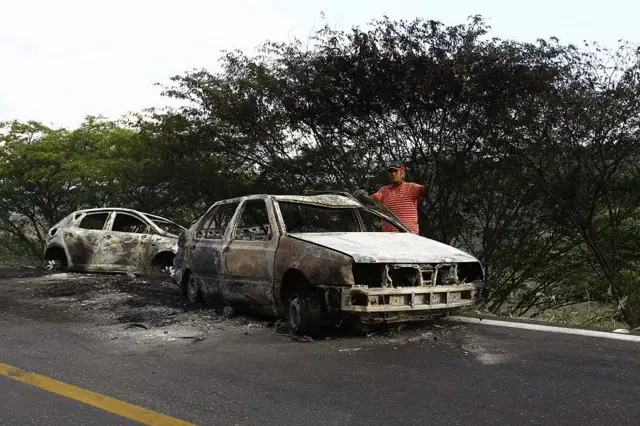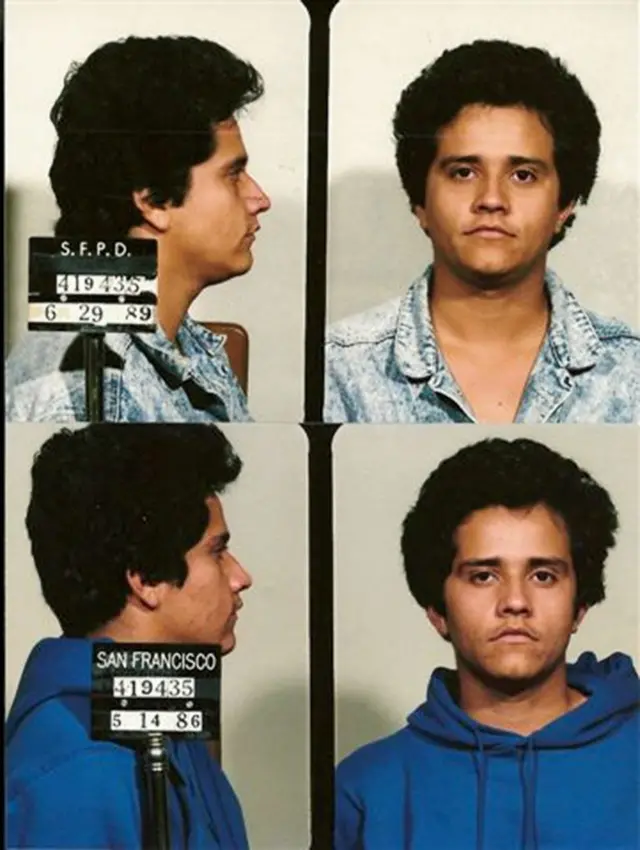Known as “El Mencho,” he is the top leader of the Jalisco New Generation Cartel (CJNG), one of the most violent and widespread criminal organizations in Mexico, which was designated a terrorist organization by the U.S. government last month.
On Saturday, Los Alegres del Barranco performed their song “El del Palenque.” Its lyrics directly reference “Mencho,” who is hailed as the leader of the “four-letter” cartel, along with several of his lieutenants, or “roosters,” depending on the song.
Although the song was released by the group in 2021 and has performed in multiple venues, Saturday’s performance took place in a delicate context.
It took place in an auditorium in the capital of Jalisco, located just a few kilometers from Teuchitlán, the town where a site used by the CJNG to train recruits and where murders and torture were allegedly committed was discovered in early March.
“This shouldn’t happen… it’s not right. Let there be an investigation,” President Claudia Sheinbaum said on Monday, also asking organizers of musical events to “think carefully about who they invite and what kind of show they’re going to host, because you can’t praise violence or criminal groups.”
Despite the criticism, Los Alegres del Barranco performed the song again on Sunday, displaying photographs of “El Mencho” on giant screens, in a performance in the neighboring state of Michoacán.
Oseguera Cervantes has been the subject of multiple “narcocorridos” since the kingpin emerged as one of the most wanted drug trafficking leaders by justice systems in Mexico and the United States.
The United States Drug Enforcement Administration (DEA) placed “El Mencho” as its main target on its famous list of most wanted fugitives in 2020. Since then, it has offered US$15 million for information leading to his capture.
And the current Donald Trump administration has placed the CJNG on a list of terrorist organizations it seeks to combat in the Americas.

His Rise to Leader of the CNJG
After the arrest and extradition to the US of Joaquín “El Chapo” Guzmán in 2017, the next major target of Mexico’s anti-narcotics forces was Oseguera Cervantes.
Also known as Nemesio Oseguera Ramos or Rubén Oseguera Cervantes, and with various aliases, such as “El Mencho” or “El Señor de los Gallos,” he is known to have been born in the Tierra Caliente region of Michoacán, probably in Uruapan or Aguililla.
In the 1980s, he migrated to the United States. In California, he was arrested several times for minor offenses, but by the early 1990s, he began to get involved in drug dealing, which led to his deportation.
Upon his return to Mexico, he joined the police force in a municipality in Jalisco, but chose to become involved in the protection circle of drug trafficker Armando Valencia Cornelio, “El Maradona,” a leader of the Los Valencia (or Milenio) cartel.
The group had an alliance with the Sinaloa Cartel, but they split in 2010 after the death of one of its founders, Ignacio “Nacho” Coronel. Along with his brother-in-law Abigael González Valencia, “El Cuini,” he inherited part of its structure.
From that moment on, the CJNG was born. And “El Mencho’s” criminal career accelerated.
In just a few years, the CJNG group grew from a local gang in the states of Jalisco and Colima to an organization with a presence in more than half of Mexico.
His main business was focused on the illegal amphetamine market in the United States and Europe, but links between his gang and the Asian drug market have also been detected.
There are several reasons behind the CJNG’s rapid growth.
One of them is the capture of many of the main leaders of rival cartels, which in some cases led to their dissolution or the near extinction of some, such as Los Templarios in the state of Michoacán. The CJNG filled the market gaps left by rivals.
Another key factor is that the CJNG recruited financial experts and chemists who design new mixtures for the manufacture of synthetic drugs.
The cartel’s violence has been another key factor. Over the last decade, authorities have identified “El Mencho” as a highly dangerous figure with a strong firepower. Some experts on the subject claim that Oseguera Cervantes grew precisely by “crushing” his rival groups.
The interests of the CJNG and its leader have not been limited to drug trafficking. They have taken advantage of the economic boom in Jalisco’s livestock, agriculture, and construction sectors to create businesses in these sectors and use them as avenues to launder drug proceeds.
The CJNG has also been known for its corrupting power over local authorities and customs. This has facilitated the entry of precursors or starting substances for the production of synthetic drugs into the ports of Manzanillo, Colima, and Lázaro Cárdenas, Michoacán, both on Mexico’s west coast.
Another source of income has been extortion of small and medium-sized businesses in western Mexico.

However, since 2022, there have been rumors about his health condition. His death has even been reported on a couple of occasions, something that authorities have not been able to corroborate. Experts indicate that “El Mencho” is likely no longer directly in charge of the CJNG’s operations.
One of his sons, Rubén Oseguera González—considered second in command of the group—was extradited from Mexico to the US in 2020 in what was described as one of the harshest blows against the organization to date.
His wife, Rosalinda González Valencia, was also arrested in 2021 and sentenced two years later on organized crime-related charges. She was released at the end of last February after being granted early release.

Source: bbc




